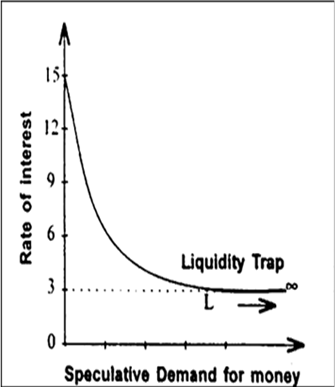
Government of India has recently launched 'Jan-Dhan Yojna' aimed at every household in the country to have at least one bank account. Explain how deposits made under the plan are going to affect national income of the country.
With the Jan Dhan Yojna a greater number of individuals are brought under the ambit of banking system. Those individuals who earlier did not have savings account now have access to banking facilities and have opened savings account with the commercial banks.
In this way, the commercial banks are able to tap greater savings which in turn can be used to lend loans for investment purposes. Thus, the yojna indirectly helps in increasing the investment and production in the economy which in turn would help in improving the national income.
Explain the 'bank of issue' function of the central bank.
Or
Explain 'Government's Bank' function of central bank.
The central bank is the bank of issue. It has the monopoly of note issue. Notes issued by it circulate as legal tender money. It has its issue department which issues notes and coins to commercial banks. Coins are manufactured in the government mint but they are put into circulation through the central bank.
However, the currency issued by the central bank is its monetary liability. In other words, the central bank is obliged to back the currency issued by it by assets of equal value such as gold coins and bullions, foreign exchange. In addition to issuing currency to the general public, the central bank also issues currency to the central government of the country.
Or
Central banks act as bankers, fiscal agents and advisers to their respective governments. As a banker to the government, the central bank keeps the deposits of the central and state governments and makes payments on behalf of governments. But it does not pay interest on governments deposits. It buys and sells foreign currencies on behalf of the government. It keeps the stock of gold of the government. Thus it is the custodian of government money and wealth. As a fiscal agent, the central bank makes short-term loans to the government for a period not exceeding 90 days. It floats loans, pays interest on them, and finally repays them on behalf of the government. Thus it manages the entire public debt. The central bank also advises the government on such economic and money matters as controlling inflation or deflation, devaluation or revaluation of the currency, deficit financing, balance of payments, etc.
What is a ‘legal tender’? What is ‘fiat money’?
